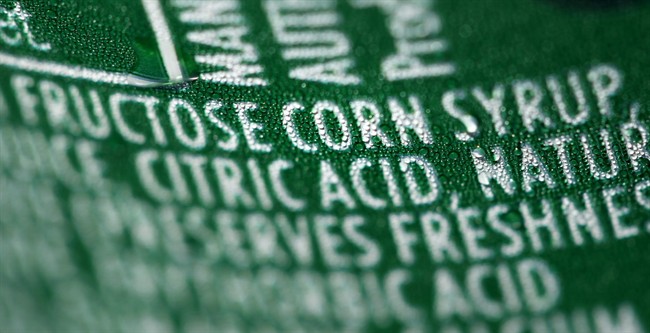Obesity is a major problem in Canada. And though it’s not as pronounced as in the U.S., among advanced economies, the Great White North ranks with the fattest countries.

A new study suggests that may have something to do with NAFTA.
The research, published in the Canadian Medical Association Journal (CMAJ), found that lower import tariffs on high-fructose corn syrup (HFCS) implemented under the free trade agreement resulted in a larger supply and likely consumption of added sweeteners in Canada.
HFCS, a common sweetener in sodas, fruit drinks and many solid foods, has been linked to obesity.
As use of HFCS went up, so did the incidence of obesity and other health problems such as diabetes, according to the Mayo Clinic, a U.S.-based medical research centre.
Scientists disagree about whether the human body assimilated HFCS differently than other types of sugars but agree that excessive consumption of sugars of any kind is linked to weigh gain, type 2 diabetes and a higher risk of heart disease, among other health issues.
WATCH: Drinking diet soda during pregnancy linked to childhood obesity: study

The CMAJ study, which looked at the period from 1985 to 2000, found that lower tariffs on HFCS likely resulted in an increase of 41.6 kilocalories in the daily supply of caloric sweeteners (which include HFCS, fructose and maltose, maple sugar and syrup, glucose, dextrose, lactose and molasses).
READ MORE: Canadians can now get McDonald’s via UberEATS – but is it worth it?
Soaring Canadian imports of HFCS were correlated with a sharp rise in obesity rates, from 5.6 per cent in 1985 to 14.8 per cent in 1998, the authors noted.
The period after the implementation of NAFTA (in 1994) also saw diabetes rates balloon, from 3.3 per cent to 5.6 per cent, between 1998-99 and 2008-09.
With NAFTA in place, tariffs on food and drinks containing HFCS were gradually removed between 1994 and 1998. However, tariffs on cane and beet sugar remained due to a long-standing trade dispute between Canada and the U.S.
READ MORE: Big Sugar and Big Corn settle bitter battle over sweeteners
The researchers found that Canada’s supply of caloric sweeteners kept rising with every gradual lowering of the tariffs on HFCS and held steady after the final reduction in 1998.
The country’s overall supply of sugars and sweeteners also stopped declining, as it had been for some time before the introduction of NAFTA, they noted.
Countries that are not parties to NAFTA, including Australia and the U.K., didn’t see a similar increase over the same time period, the authors said.
WATCH: Obesity linked to 11 different cancers: study

NAFTA also coincided with HFCS gaining a larger share of the Canadian market for sugar and sweeteners.
Caloric sweeteners including HFCS accounted for only 4.8 per cent of total sweetener use in Canada before NAFTA, but a whopping 13.5 per cent after the implementation of the free trade agreement.
The findings raise concerns about the public health implications of free trade deals with the U.S. that would use NAFTA as a blueprint, according to the authors.
These include a potential new deal between the U.S. and the U.K. after the latter decided to leave the European Union, and the Trans-Pacific Partnership, which would create a free-trade zone among the U.S., Canada, Mexico and nine other Pacific Rim countries.
READ MORE: TPP was Obama’s ‘renegotiation of NAFTA’: former trade envoy
Such “new trade deals could harm population health should lower tariffs lead to increased supply and potential consumption of unhealthy food items, particularly those containing HFCS,” the study concluded.




Comments